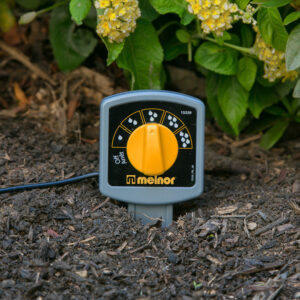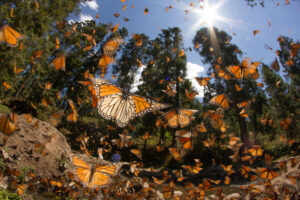
June 17, 2022
Debris, minerals, and sediments commonly found in water can build up in your product over time. It’s important to clean your sprinklers periodically to keep them working season after season. Fix a clogged oscillating sprinkler with these steps.
Fix a Clog
Follow these five steps if you notice a clog in your sprinkler.

- Remove the sprinkler from the hose
- Check if the filter washer is clear; if you notice any debris, remove the filter washer, and clean it out with water
- Remove the end plug from the end of the sprinkler
- Connect the sprinkler directly to the faucet and turn on the water
- Gently spin the sprinkler tube back and forth to flush out dirt and sediment
- Remove the sprinkler from the faucet and screw the end plug firmly back into place
Fix an Odd Spray Pattern

If your sprinkler has an irregular spray pattern, use the cleaning tool.
- Remove the end plug from the end of the sprinkler
- Use the cleaning tool to clean out the nozzles that have an irregular spray gently
- Screw the end plug firmly back into place
Freezing temperatures can cause water in the product to freeze and expand, damaging the sprinkler. Store your sprinklers indoors, away from freezing temperatures at the end of the season or when there is frost in the forecast.
Perfect Your Watering
Make small adjustments to your sprinkler system to avoid unnecessary evaporation and runoff. Save water and reduce your water bill by checking your sprinkler system regularly.

- Use a moisture sensor – A soil moisture sensor such as Melnor’s HydroLogic® Soil Moisture Sensor monitors how wet the soil is to skip watering automatically when it rains, or the soil is too damp.
- Regulate water pressure – Too high-water pressure can create a mist from your sprinklers that won’t water where it’s meant to. Install a pressure gauge to regulate water pressure.
- Clean sprinkler heads – Dirt can easily clog your sprinkler heads. Use a paperclip to clean out pulsating sprinklers and rotary sprinkler heads. This will give you the best water flow to water effectively.

- Avoid water run-off – Adjust the sprinkler’s spray pattern to water the lawn and not the driveway. Melnor’s XT oscillating sprinklers have three dimensions of adjustability to keep the water on the lawn. Similarly, position the sprinklers to avoid any direct obstructions in the watering path like trees, yard toys, or raised beds.
- Check for leaks – Inspect your hose, sprinklers, and valves for any leaks. A small leak can affect your water bill in a big way. Monitor the water pressure and watch for dry or muddy spots to catch early leaks.
- Store indoors – Freezing temperatures can cause water in the product to freeze and expand, damaging the sprinkler. Store your sprinklers indoors, away from freezing temperatures at the end of the season or when there is frost in the forecast.



